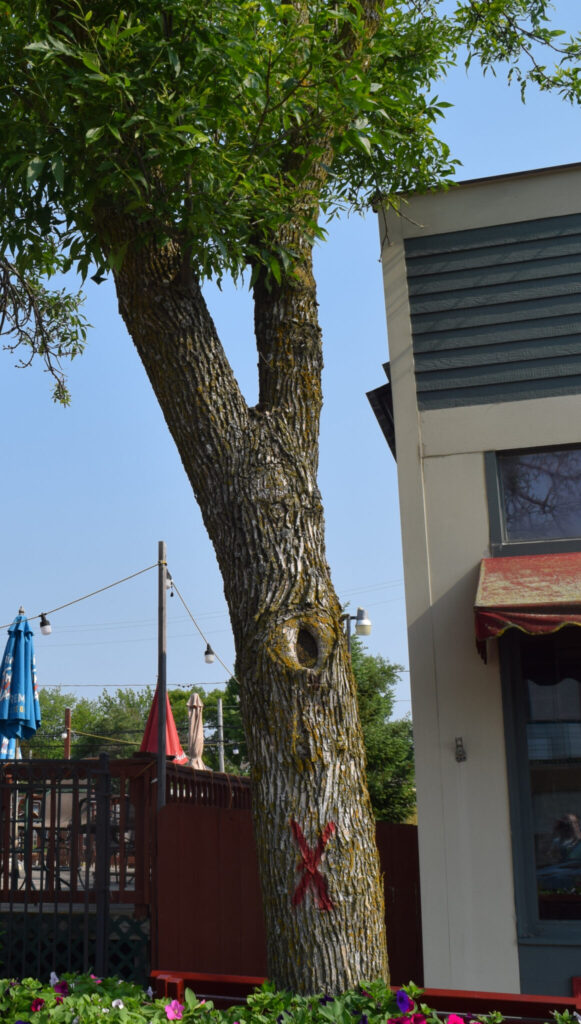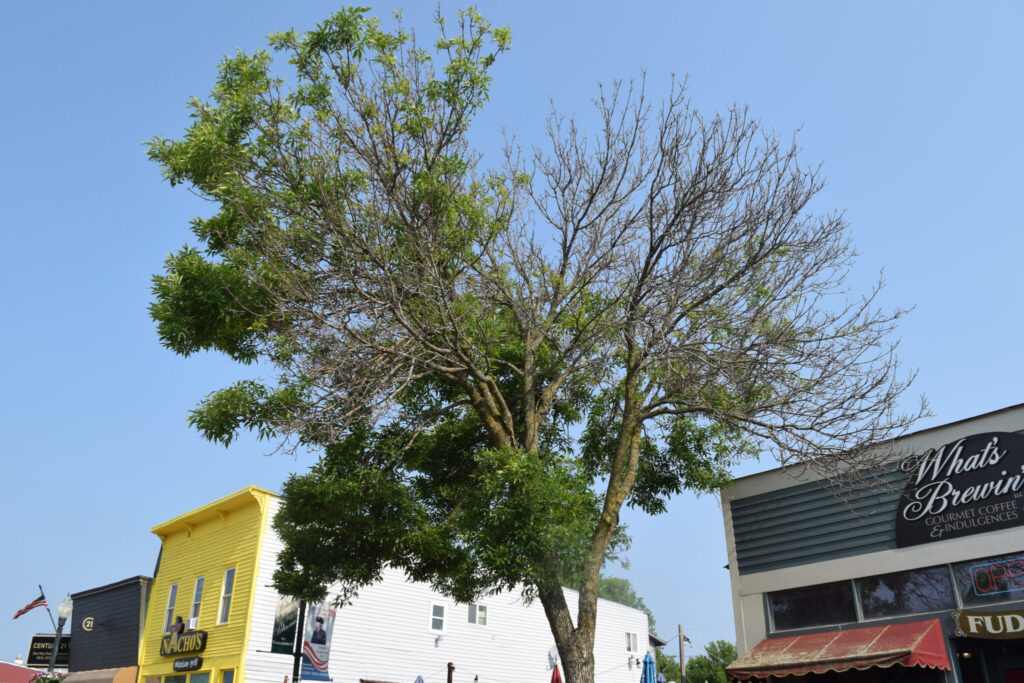By Jalen Maki
Tomahawk Leader Editor
TOMAHAWK – Ash trees throughout the City of Tomahawk are being impacted by an invasive species.
During the city’s Park and Recreations Committee meeting at City Hall on Tuesday, June 13, Street Department Leadperson Nick Rosenmeier said emerald ash borer (EAB) has been found within city limits.
EAB is an invasive, wood-boring beetle that kills ash trees by eating the tissues under the bark. Native to northeastern Asia, EAB was first detected in the United States in 2002 and is thought to have been introduced from China through the wood from shipping crates, according to the Wisconsin Department of Natural Resources (DNR).
Since first being detected in Wisconsin in 2008, EAB has been found in counties throughout the southern part of the state and has affected trees in parts of numerous northern counties, including Lincoln, Forest, Langlade, Marathon, Oneida, Price and Vilas.
As of last month, only four Wisconsin counties – Burnett, Rusk, Taylor and Washburn – had no EAB detections since 2008.
Rosenmeier told the committee that he’d identified about ten impacted trees in the city that he would like to see taken down, noting he chose “the worst of the worst.”

“These trees are not coming back,” Rosenmeier stated. “There’s a 100% chance that every ash tree in this city will be gone. There’s no denying it. It’s science.”
Rosenmeier said he and Ted Foley of Foley’s Tree Service inspected affected trees last fall, and Foley anticipated that the situation will worsen over the next four to five years.
City employees will focus on removing trees that have died or are dying, Rosenmeier told the committee, but the high number of ash trees within the city limits presents a challenge.
“We’re never going to get caught up,” Rosenmeier stated, noting that there are about 300 ash trees on city property.
“If we take down ten trees a year, that’s 30 years,” he said.
Rosenmeier told the committee that some of the trees are too large or hazardous for city employees to remove.
“We, as a city, have to start planning how we’re going to fund taking these trees down,” he stated.
In the meantime, Rosenmeier said he plans on moving forward with removing ash trees city employees are able to remove.

